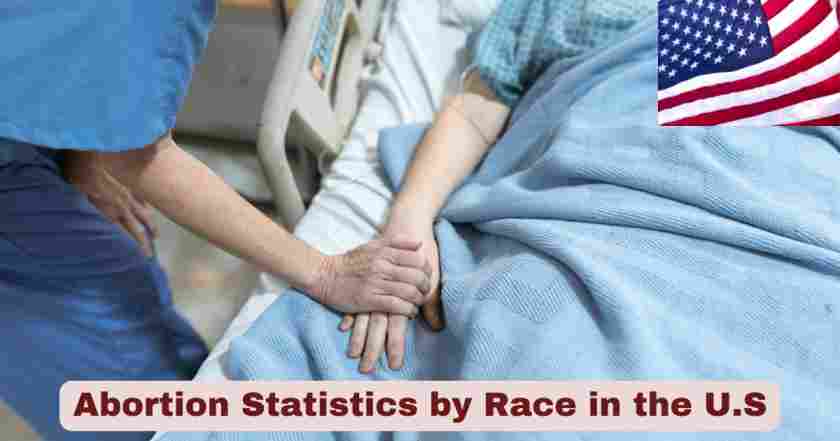Abortion by Race in the U.S. in 2025
In the ongoing conversation about reproductive health in America, abortion remains one of the most critical and debated topics. As of 2025, the issue of abortion has taken center stage, particularly in light of growing legislative restrictions in several U.S. states following the overturning of Roe v. Wade. However, beyond the political landscape lies a stark and often underreported reality: the deep racial disparities in abortion rates across the United States.
When analyzing abortion trends by race, the numbers are striking. Non-Hispanic Black women consistently have the highest abortion rates, far exceeding those of White and Hispanic women. These disparities are not new, but they are persistent and significant. They reflect decades of systemic barriers to healthcare, economic inequity, lack of access to contraception, and cultural or linguistic challenges within minority communities. In contrast, White women have the lowest abortion rates, often attributed to better access to healthcare resources and family planning services.
In 2025, understanding the racial disparities in abortion statistics is more than just interpreting numbers—it’s about uncovering the broader implications for reproductive justice, healthcare policy, and social equity.
Abortion Statistics by Race in the U.S. (2025 Update)
| Key Fact | Statistic |
|---|---|
| Non-Hispanic Black women have the highest abortion rate | 28.6 per 1,000 women aged 15–44 |
| Hispanic women have a moderate abortion rate | 12.3 per 1,000 women aged 15–44 |
| Non-Hispanic White women have the lowest abortion rate | 6.4 per 1,000 women aged 15–44 |
| Other races (Asian, Native American, Pacific Islander) | 9.2 per 1,000 women aged 15–44 |
| Most abortions occur early in pregnancy (≤9 weeks) | Between 77% and 82% across all racial groups |
| Later-term abortions are more common among Black women | 6.8% occur after 13 weeks, compared to 6.0% for Whites |
The latest data on abortion in the United States reveals significant racial and ethnic disparities in abortion rates and timing. Non-Hispanic Black women continue to have the highest abortion rate, with 28.6 abortions per 1,000 women aged 15–44, more than four times the rate observed among non-Hispanic White women, who have the lowest rate at 6.4 per 1,000. Hispanic women fall in the middle with 12.3 abortions per 1,000, while women from other racial groups (including Asian, Native American, and Pacific Islander populations) report a rate of 9.2 per 1,000. These disparities are influenced by a combination of social determinants of health, such as access to contraception, healthcare availability, economic inequality, and structural racism within the healthcare system. Limited access to comprehensive reproductive health services often leads to unintended pregnancies, which are more likely to result in abortion among marginalized populations.
In addition to differences in abortion rates, timing also varies across racial groups, particularly in the context of access and systemic barriers. The majority of abortions across all demographics—between 77% and 82%—occur early in pregnancy, typically at 9 weeks or earlier, when procedures are safer and less complex. However, Black women are more likely to obtain abortions later in pregnancy, with 6.8% occurring after 13 weeks, compared to 6.0% among White women. This delay may be driven by factors such as delayed pregnancy recognition, difficulty navigating the healthcare system, or challenges in obtaining appointments due to restrictive state laws and clinic closures. These findings highlight the ongoing need for equitable access to reproductive healthcare, timely education, and policies that remove barriers for women of all racial and ethnic backgrounds to make informed decisions about their reproductive health.
Abortion Rates by Race in the U.S. 2022
| Race/Ethnicity | Abortion Rate (Per 1,000 Women Aged 15–44) |
|---|---|
| Non-Hispanic Black | 28.6 |
| Hispanic | 12.3 |
| Non-Hispanic White | 6.4 |
| Other Races | 9.2 |
The 2022 abortion statistics by race and ethnicity reveal deep and persistent disparities in reproductive healthcare access and outcomes across the United States. Non-Hispanic Black women had the highest abortion rate at 28.6 per 1,000 women aged 15–44, a figure more than four times that of non-Hispanic White women, who reported a rate of 6.4 per 1,000. Hispanic women had a rate of 12.3, while women from other racial backgrounds, including Asian, Native American, and multiracial groups, recorded a combined rate of 9.2. These differences reflect a complex intersection of socioeconomic inequality, systemic barriers to contraception and healthcare, and variations in unintended pregnancy rates among different racial and ethnic communities.
The elevated abortion rates among women of color, particularly Black women, underscore how historic and structural inequities continue to shape reproductive health outcomes. Contributing factors may include reduced access to high-quality reproductive health services, insurance limitations, lack of culturally competent care, and differences in education or community-level support. These disparities are not simply medical—they are social and economic realities that disproportionately burden marginalized communities. Understanding the racial breakdown of abortion rates is essential for shaping equitable healthcare policies, expanding access to contraception and family planning services, and ensuring all women have the resources to make informed reproductive choices.
Gestational Timing of Abortions by Race in the U.S. 2022
| Race/Ethnicity | Abortions at ≤9 Weeks Gestation | Abortions at >13 Weeks Gestation |
|---|---|---|
| Non-Hispanic Black | 77.1% | 6.8% |
| Hispanic | 81.8% | 5.3% |
| Non-Hispanic White | 80.5% | 6.0% |
This table highlights the timing at which abortions are typically performed across racial groups. Black women had the lowest rate of early-term abortions (77.1%) and the highest rate of later-term procedures (6.8%). This suggests significant challenges in accessing timely care.
In contrast, Hispanic women had the highest percentage of early abortions (81.8%), followed by White women (80.5%). These higher rates of early procedures indicate more effective early pregnancy detection, easier appointment access, and fewer delays in service provision.
Delays that push abortions beyond 13 weeks often result from logistical challenges—such as long-distance travel to clinics, lack of childcare, inability to take time off work, and state-imposed waiting periods. These delays disproportionately affect minority populations, especially in regions with few reproductive health providers.
Distribution of Total Abortions by Race in the U.S. 2022
| Race/Ethnicity | Percentage of Total Abortions |
|---|---|
| Non-Hispanic Black | 39.9% |
| Non-Hispanic White | 27.6% |
| Hispanic | 21.0% |
| Other Races | 11.5% |
The percentage of total abortions attributed to Black women (39.9%) is nearly three times their share of the U.S. female population, which is around 13%. This disparity indicates not just higher rates of unintended pregnancies, but also limited reproductive choices due to lack of resources, support, and access.
Non-Hispanic White women, despite comprising the majority population, accounted for just 27.6% of all abortions, again underscoring their comparatively lower abortion rate.
Hispanic women, who make up a significant and growing portion of the population, accounted for 21.0% of all abortions—a reflection of their moderate abortion rate and growing need for inclusive healthcare access.
The “Other races” category, contributing 11.5% of all abortions, represents a wide array of communities that may experience underrepresentation in data, limited access to care, or specific cultural challenges.
Teen Abortion Rates by Race in the U.S. 2022
| Race/Ethnicity | Teen Abortion Rate (Ages 15–19) |
|---|---|
| Non-Hispanic Black | 10.7 per 1,000 teens |
| Hispanic | 6.9 per 1,000 teens |
| Non-Hispanic White | 3.4 per 1,000 teens |
Teen abortion rates reflect access to sex education, birth control, and supportive services. In 2022, Black teens had the highest abortion rate at 10.7 per 1,000, indicating a critical need for youth-specific outreach and care models.
Hispanic teens followed with a rate of 6.9, and White teens had the lowest rate at 3.4 per 1,000. These patterns highlight the effects of school-based education, parental engagement, healthcare availability, and access to confidential reproductive services.
Efforts to reduce teen abortion rates must address education quality, healthcare outreach, and contraceptive affordability, especially in under-resourced school districts and rural communities.
The State of Abortion Disparities in the U.S. in 2025
The abortion statistics by race in the U.S. provide more than just numerical insight—they expose the persistent inequalities that shape reproductive healthcare in America. Non-Hispanic Black women continue to bear the greatest burden, with the highest abortion rates, a higher percentage of later-term procedures, and the largest share of total abortions relative to their population size.
Hispanic and other minority women also face elevated risks, especially where immigration, language, or location act as access barriers. In comparison, White women consistently exhibit the lowest abortion rates, a reflection of greater privilege in navigating the healthcare system.
Solving these disparities requires comprehensive, equity-driven solutions:
- Universal access to affordable contraception
- Culturally and linguistically inclusive sexual education
- Removal of state-imposed legal barriers
- Expansion of reproductive care facilities in underserved areas
- Targeted outreach to minority and adolescent populations
In 2025, the data makes one thing clear: racial inequality in reproductive healthcare remains a pressing challenge. By acknowledging and addressing these disparities, policymakers and healthcare providers can work toward a more just and equitable system—one where race no longer determines access to timely, safe, and dignified abortion care.
Disclaimer: The data research report we present here is based on information found from various sources. We are not liable for any financial loss, errors, or damages of any kind that may result from the use of the information herein. We acknowledge that though we try to report accurately, we cannot verify the absolute facts of everything that has been represented.







